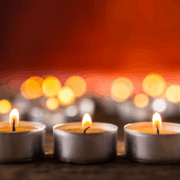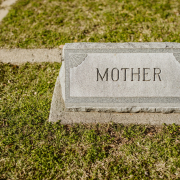Indigenous Funeral Traditions in Canada: Honoring Cultural Practices
When a loved one passes, the rituals that follow are more than routine—they’re a reflection of history, identity, and spiritual belief. Across Indigenous communities in Canada, traditional funerals serve as sacred ceremonies that honor the life, spirit, and ancestry of the departed.
These are not one-size-fits-all customs. Canada is home to more than 630 First Nations, Métis, and Inuit communities—each with its own cultural protocols, languages, and ceremonial practices. Yet, the intention is shared: to create space for healing, connection, and continuity.
For families and funeral professionals alike, understanding and respecting these traditions is not only a matter of compassion—it’s a commitment to cultural integrity.
The Role of Ceremony in Indigenous Funeral Services
In many Indigenous traditions, death is seen as a passage—not an end.
Traditional funerals often reflect this worldview, weaving together the physical, emotional, and spiritual aspects of saying goodbye. These ceremonies may involve smudging with sage or sweetgrass, sacred drumming or singing, storytelling, or spiritual guidance from Elders or community leaders.
Some common elements may include:
- Prayer circles or community vigils
- The use of sacred medicines (tobacco, cedar, sweetgrass, sage)
- Funeral songs passed down through generations
- Custom-made caskets, regalia, or personal items buried with the deceased
- Open-air wakes, or home-based memorial services
Each tradition is rooted in its local land, language, and cosmology. For some, the journey of the soul continues beyond this world, guided by songs and ceremony. For others, the emphasis lies in collective remembrance and intergenerational healing.
Honoring Diverse Traditions in Funeral Planning
It’s important to remember: not all Indigenous funerals look alike. Even within a single Nation, customs may vary depending on geography, family lineage, or spiritual orientation.
This is why open, respectful communication during funeral planning is essential.
At Tranquility Funeral Services, we encourage families to share their cultural needs early in the planning process. Whether it’s allocating space for drumming and singing, coordinating with Elders, or allowing time for traditional mourning rituals, we are committed to making room for these meaningful expressions.
We also understand that some families blend traditional Indigenous elements with Christian or contemporary practices—and we’re here to support both.
A Place for Language, Song, and Story
Language and oral tradition are often at the heart of Indigenous funeral services. Elders may speak in their Native tongue, offering blessings or recounting the life of the deceased through memory and metaphor.
Funeral songs, too, carry powerful weight. These songs may be personal to the family or drawn from a specific clan or nation. Some are meant to guide the spirit safely on its journey, while others call upon ancestors to receive the departed.
Creating space for these expressions—whether through ceremony, music, or shared silence—is one way to support a truly inclusive and respectful memorial.
Supporting Families With Cultural Sensitivity
For non-Indigenous friends or family attending an Indigenous traditional funeral, it’s okay to ask what’s appropriate.
Simple actions like observing without interrupting, removing your hat, or participating silently in a smudging ceremony show respect. You don’t have to know every detail—what matters most is your presence and willingness to honor the moment.
For those organizing services, our role is to provide professional support without imposing. That might mean:
- Helping families access sacred items or spaces
- Adjusting timelines to allow for community travel or mourning practices
- Coordinating with spiritual leaders or ceremonial practitioners
- Providing translation services or documentation in Indigenous languages when possible
Preserving Tradition in a Modern Context
Many Indigenous families in urban settings are navigating how to honor traditional funerals in contemporary environments. Whether that means holding a memorial service in a community center or blending cultural practices into a chapel ceremony, our goal is to make that integration as seamless and meaningful as possible.
No two services are the same—but every life deserves to be honored in a way that reflects who they were, where they come from, and the spirit they carry forward.
Compassionate Care Rooted in Respect
At Tranquility Funeral Services, we recognize that funeral planning is never easy—and when culture and tradition are involved, it becomes even more personal.
Whether you’re looking to include sacred practices, choose appropriate funeral songs, or plan a ceremony that reflects generations of tradition, we are here to help you honor your loved one with integrity and care.
Because in the end, it’s not just about how we say goodbye—it’s about how we carry their story forward.






 No one can ever deny the power that rests in the written word. Since the proliferation of pictorial language and the invention of paper, books have captured the minds and hearts of everyone, young and old alike. Today, books still help you understand concepts and learn new ideas.
No one can ever deny the power that rests in the written word. Since the proliferation of pictorial language and the invention of paper, books have captured the minds and hearts of everyone, young and old alike. Today, books still help you understand concepts and learn new ideas. 
 One thing that is never guaranteed to any person is time. We live day-to-day with no knowledge of the future and possible outcomes. Because time is so hard to control, we can never be certain about the things that will occur even a minute from now. Even if you live a healthy lifestyle, you could run into an accident in a split second. Unfortunately, your family suffers when your life suddenly runs its full course abruptly.
One thing that is never guaranteed to any person is time. We live day-to-day with no knowledge of the future and possible outcomes. Because time is so hard to control, we can never be certain about the things that will occur even a minute from now. Even if you live a healthy lifestyle, you could run into an accident in a split second. Unfortunately, your family suffers when your life suddenly runs its full course abruptly.  Well I’ve heard there was a secret chord That David played and it pleased the Lord But you don’t really care for music, do you? Well, it goes like this: The fourth, the fifth, the minor fall and the major lift The baffled king composing Hallelujah
Well I’ve heard there was a secret chord That David played and it pleased the Lord But you don’t really care for music, do you? Well, it goes like this: The fourth, the fifth, the minor fall and the major lift The baffled king composing Hallelujah Did I disappoint you or let you down?
Did I disappoint you or let you down? Even now…I remember all the empty spaces
Even now…I remember all the empty spaces
